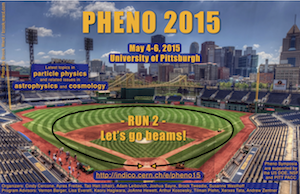Speaker
Gaurav Mendiratta
(Indian Institute of Science, Bangalore,India)
Description
Dark matter is one of the major puzzles in our understanding of physics today where we expect the solution to be within the reach of our current theoretical knowledge of field theory and experimental reach. With LHC run-II scheduled for 2015, searches for accessible dark matter models is a major concern. In this work we consider the simplest dark matter model, an inert scalar with no Standard Model charges. Interactions of this scalar with Standard Model particles can proceed through the Higgs boson and such models have been extensively studied recently under the category of Higgs-portal models. The singlet scalar can also interact with SM particles via a colored charged scalar mediator. The interaction between the two types of scalars can proceed via a 4-point vertex without need for any additional symmetries. Such a colored scalar particle is predicted in many UV models for example GUT-flavor theories, R parity violating SUSY and some extra dimensional models and is already a part of the LHC BSM searches.
We study this simplified model for various color representations of the mediating scalar and find constraints from relic density and direct detection on the couplings and masses of the colored scalar and DM. We find that the relic density constraints are satisfied for most of the parameter space where the singlet scalar is heavier than the colored mediator. In a simplified model framework, we search for constraints on a colored scalar particle at LHC and find that the gluon fusion to scalar pair production process constraints the scalar mass to be above 220\, GeV
. Constraints are also obtained on the coupling between the dark matter and gluons in the effective interaction framework from monojet process.
Authors
Gaurav Mendiratta
(Indian Institute of Science, Bangalore,India)
Rohini Godbole
(Centre for Theoretical Studies (CTS))
Prof.
Tim M.P. Tait
(University of California, Irvine)
